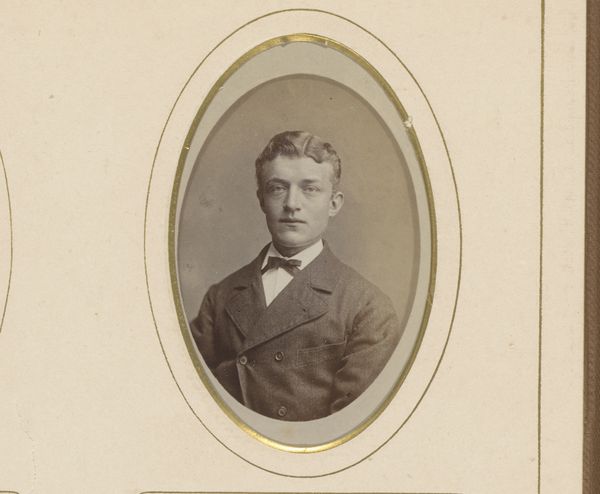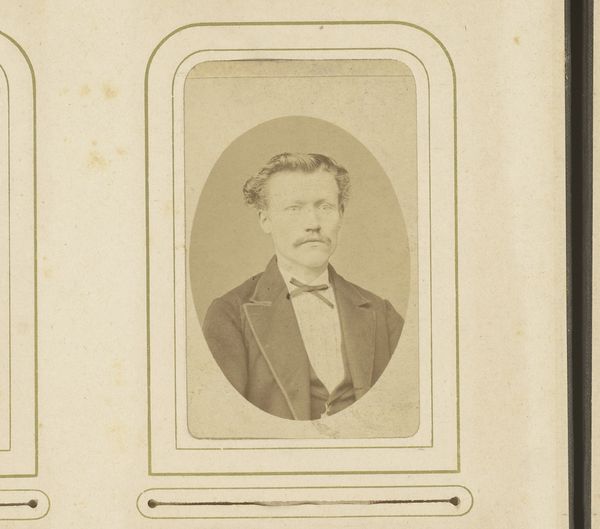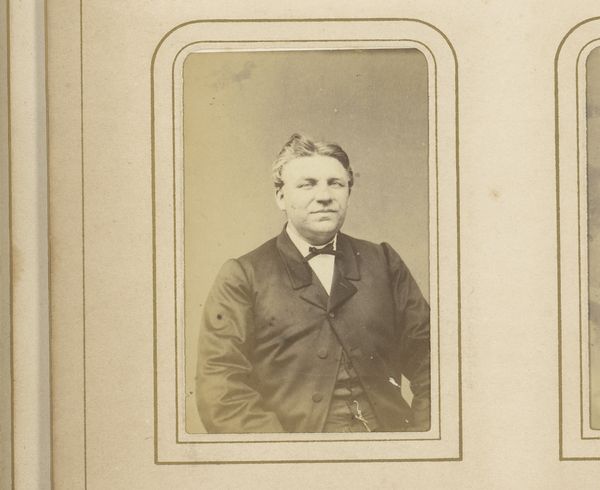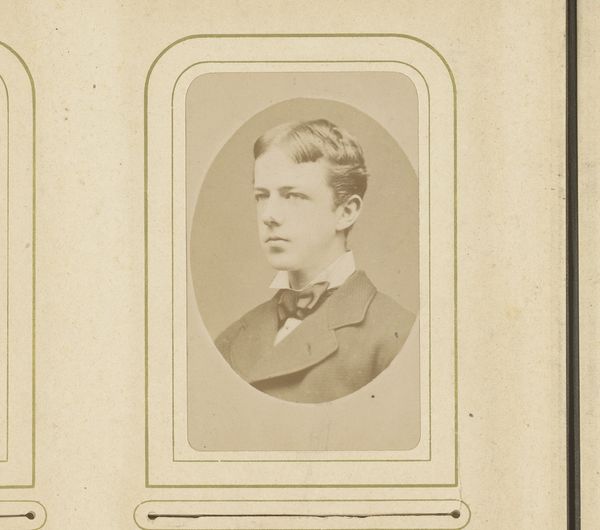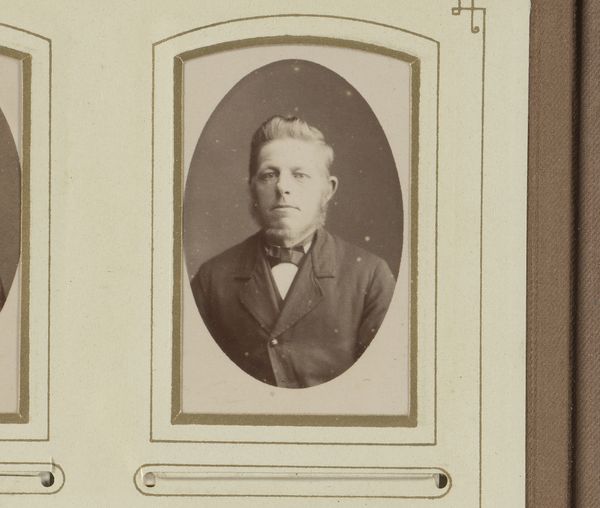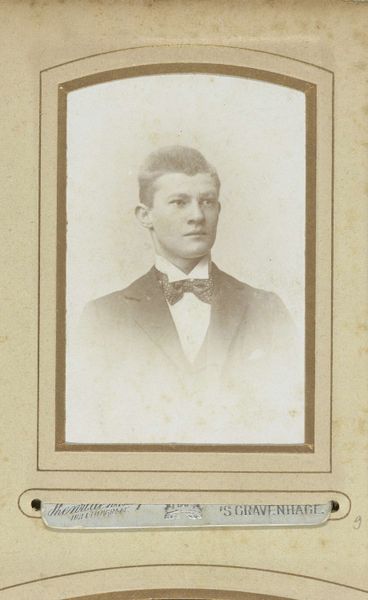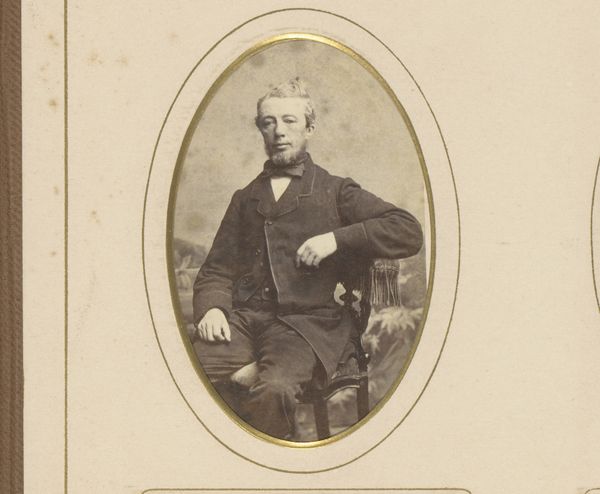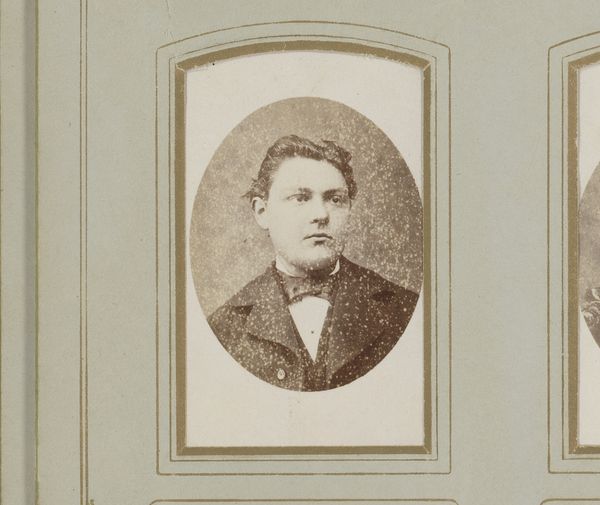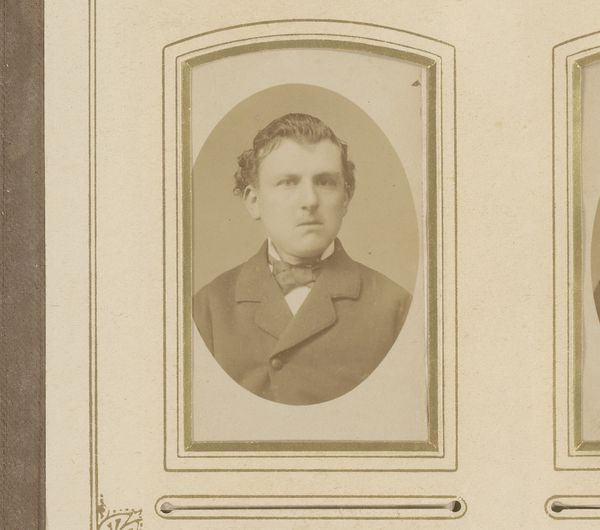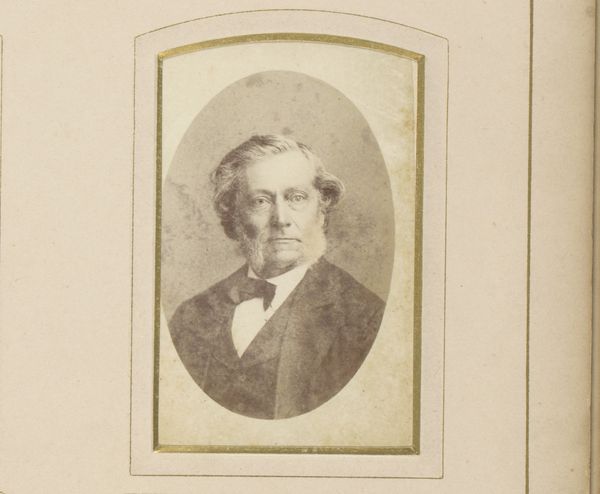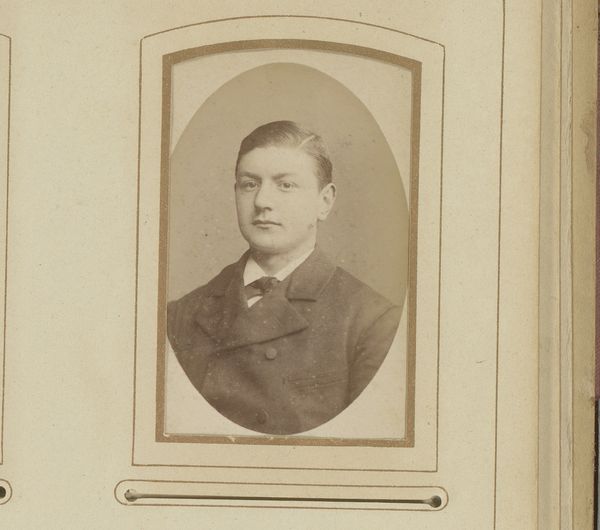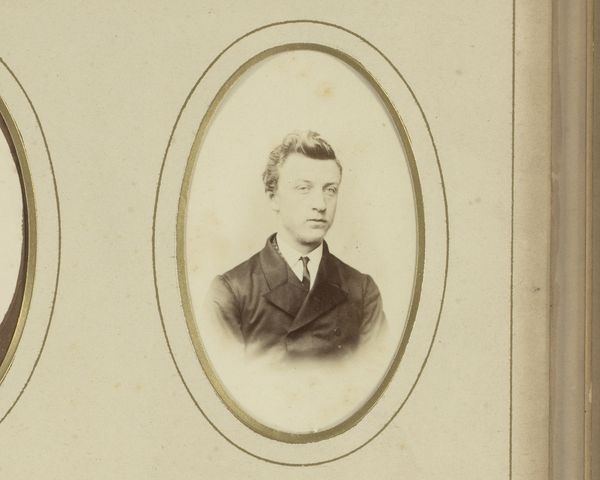
photography, gelatin-silver-print
#
portrait
#
photography
#
historical photography
#
gelatin-silver-print
Dimensions: height 82 mm, width 51 mm
Copyright: Rijks Museum: Open Domain
Editor: Here we have "Portrait of a Man with Beard," dating from somewhere between 1885 and 1906, by W.G. Kuijer & Zonen. It’s a gelatin silver print, and it really speaks to the formal conventions of portraiture from that era. What draws your eye in this piece? Curator: Immediately, I think about the materiality of this gelatin silver print. Its production, the specific chemical processes, dictated the tonal range and the detail we see. And how does the act of photography itself, becoming more accessible then, impact portraiture as a commodity? Editor: That's interesting! I hadn't considered it in terms of a commodity. How did that shift affect the art world? Curator: Well, think about it: before photography, portraits were largely the domain of the wealthy, requiring significant time and expense from a skilled painter. But the gelatin silver print, more easily reproduced, democratizes image-making to some extent. How does that availability influence who gets represented, and how? Editor: So, it changes the means of production and, thus, potentially broadens who can participate in image-making? Is it safe to say, then, that the rising accessibility influenced self-perception or social climbing at the time? Curator: Precisely! And look closely at the bordering of the photograph. The card stock it is mounted on; it is just as vital as the print to understanding the overall aesthetic. It all indicates value and deliberate creation of status and longevity. What can you gather by observing these things? Editor: Thinking about the materials helps see photography not just as capturing a likeness, but as a social and economic tool too. I hadn't fully appreciated all the layers embedded in such an everyday format. Curator: Exactly! And examining it through a material lens uncovers those very important dynamics of production, labor, and the evolution of visual culture.
Comments
No comments
Be the first to comment and join the conversation on the ultimate creative platform.
